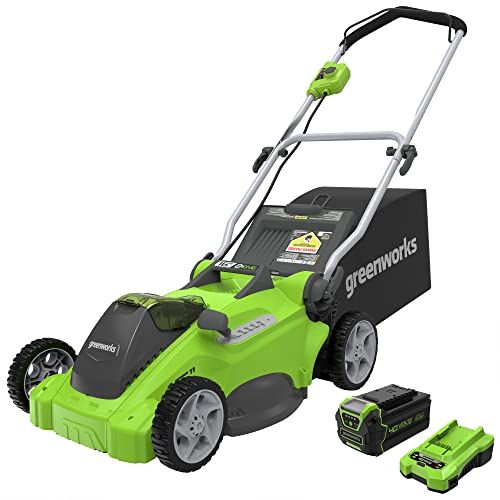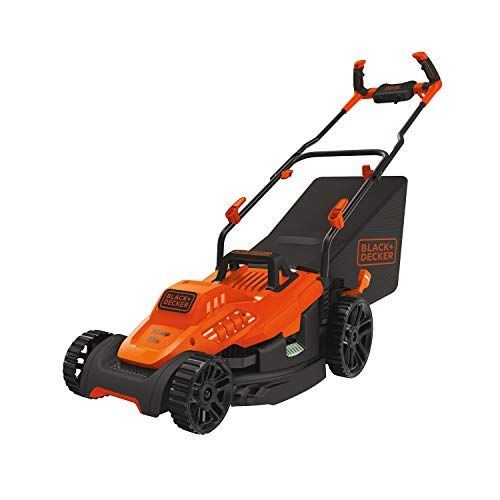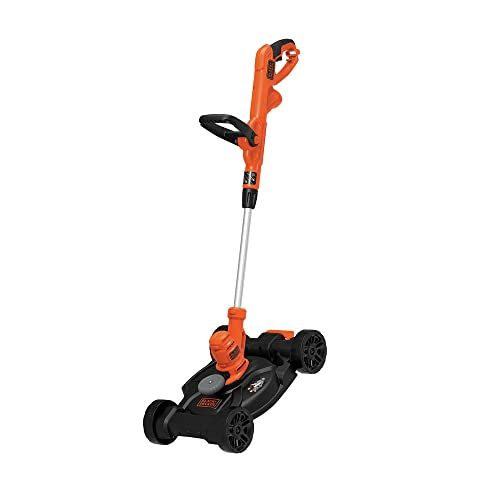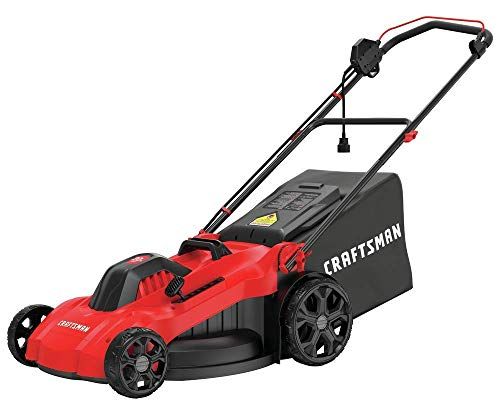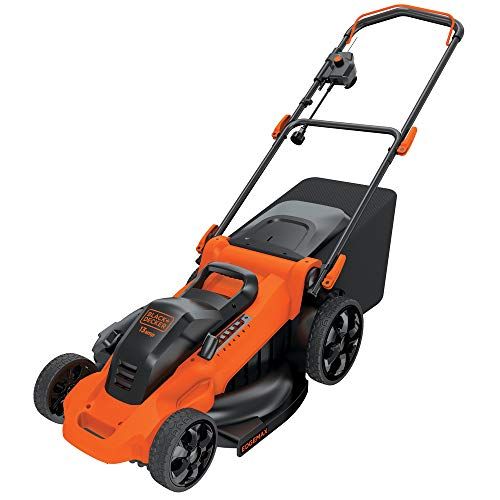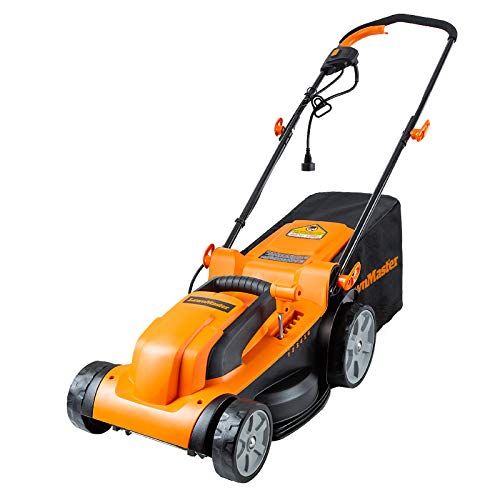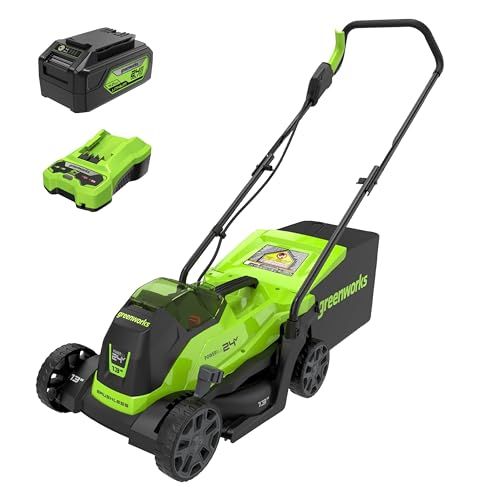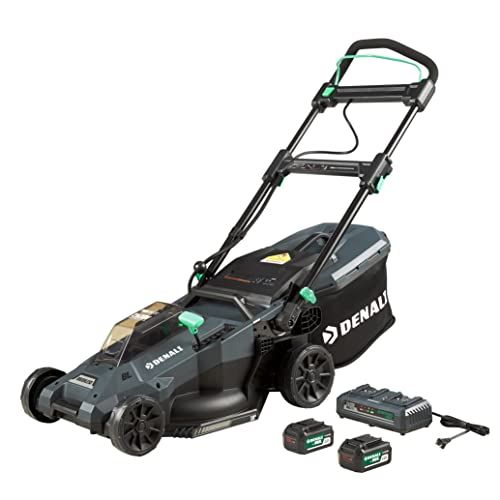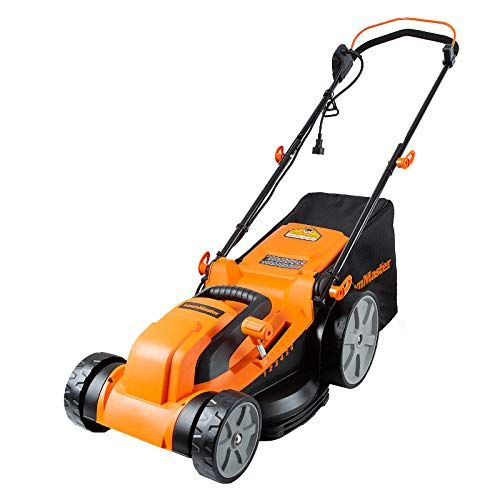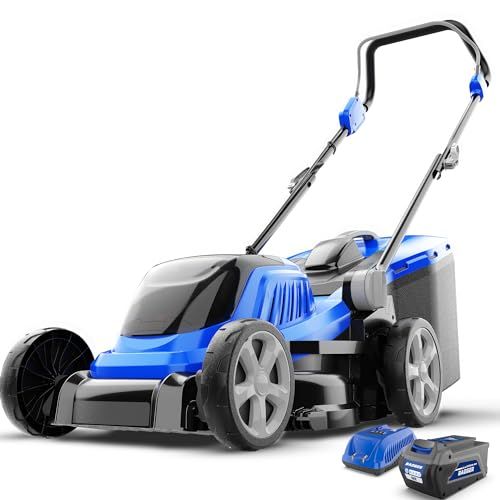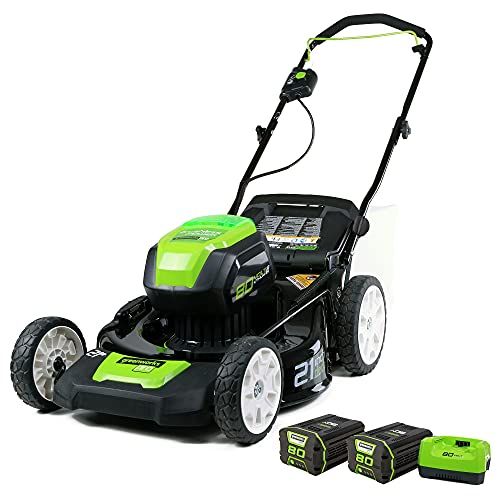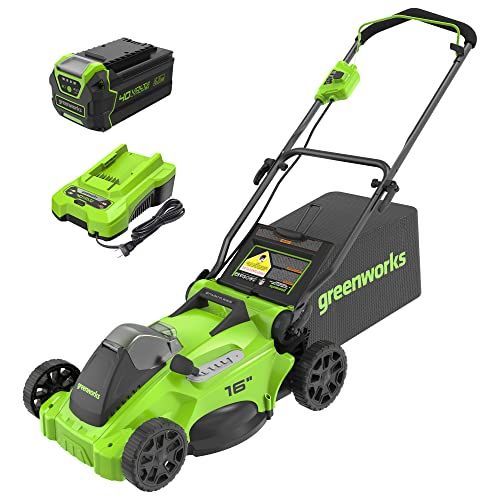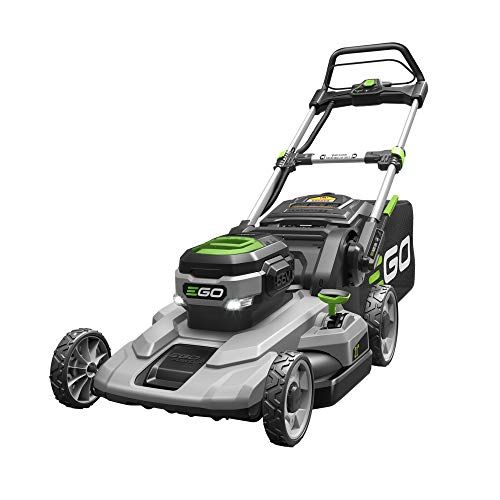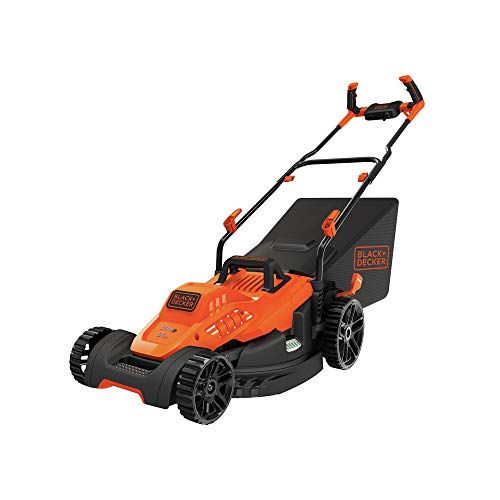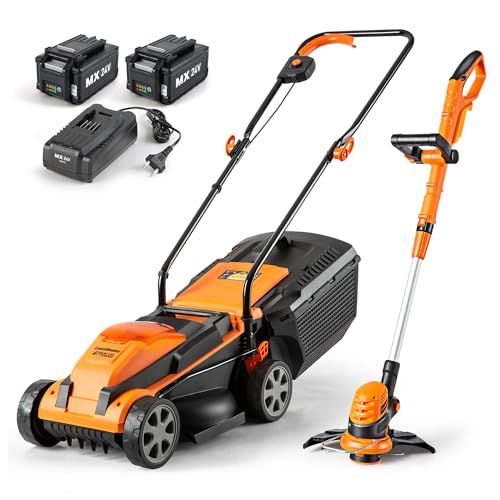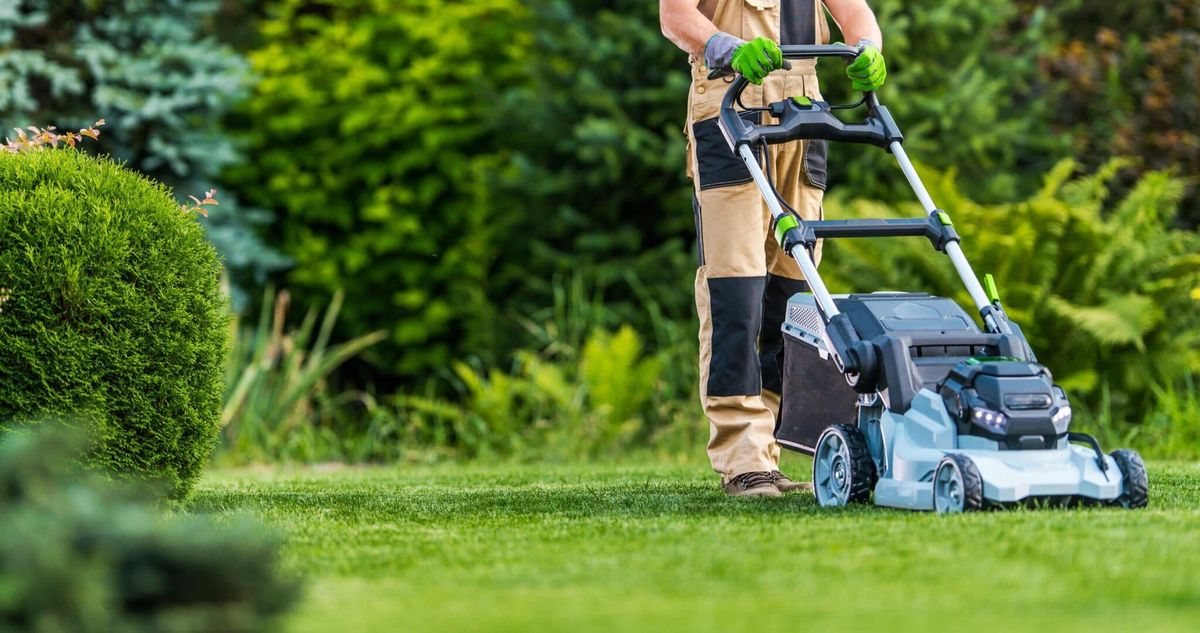
Electric lawn mowers have been around since the early 1900s, but have become increasingly popular in recent decades as battery technology has improved. Compared to gas-powered mowers, electric mowers are quieter, lighter, easier to use, and better for the environment since they don't produce emissions. Electric mowers are powered by a rechargeable battery pack that typically needs to be charged for 1-2 hours between uses.
The first primitive electric mowers were introduced in the early 1900s, but had limitations due to the heavy lead-acid batteries available at the time. It wasn't until lightweight, rechargeable batteries were developed in the 1960s and 70s that cordless electric mowers started to gain in popularity for residential use. Advancements in lithium-ion battery technology in the 1990s further improved the power and run times for cordless electric mowers.
Today, electric mowers are a popular alternative to gas-powered mowers because of their many benefits. They are compact, easy to maneuver, produce zero emissions, and require little maintenance compared to gas mowers. Electric mowers provide a quieter and more pleasant mowing experience without the noise and fumes from gas engines. The best electric mowers today can mow for up to an hour on a single charge. With no oil changes or spark plug replacements needed, electric mowers are cheaper and more convenient to maintain over their lifespan.
How Electric Mowers Work
Electric mowers function using a rechargeable battery pack that powers an electric motor connected to the cutting blades. The motor spins the blades to cut the grass. There are two main types of electric mowers:
Cordless Electric Mowers
Cordless electric mowers operate using a rechargeable lithium-ion battery that allows you to mow without being tethered by a power cord. The battery life on a single charge ranges from 30 minutes to over an hour depending on the model. Cordless mowers provide maximum freedom and flexibility to maneuver around your yard.
Corded Electric Mowers
Corded electric mowers plug directly into an outlet and run off AC power. The cord length on corded mowers can reach up to 100 feet, allowing you to mow a larger area without having to stop and recharge. Corded models are generally more powerful and affordable than cordless. However, the cord can get in the way during mowing.
Most electric mowers utilize either steel or plastic blades to cut grass. Steel blades are more durable and deliver cleaner cuts. Plastic blades are more flexible and less likely to get damaged if they strike rocks or other objects. The number of cutting blades can vary between 2-3 blades depending on the mower. More blades provide a finer cut and dispersion of clippings.
Benefits of Electric Lawn Mowers
Electric lawn mowers offer several advantages over gas-powered mowers:
Environmentally Friendly
Electric mowers are much more environmentally friendly compared to gas mowers. They do not produce any emissions or air pollution. Gas mowers emit pollutants like carbon monoxide, volatile organic compounds, and nitrogen oxides into the air which can be harmful to the environment and your health. Electric mowers have zero emissions.
Quieter Operation
Electric mowers operate much more quietly than gas-powered mowers. Gas mowers are notoriously loud, often producing noise over 90 decibels. The loud roar of a gas mower running for over an hour can be quite annoying for both the user and neighbors. Electric mowers operate around 80 decibels, the sound of a regular conversation. This makes mowing the lawn a much quieter and peaceful task.
Less Maintenance
Electric mowers require far less maintenance than gas mowers. Gas mowers need regular oil changes, air filter cleanings/replacements, spark plug changes, fuel stabilizer additions, belt replacements, blade sharpening, and more. Electric mowers, on the other hand, basically just need the blades sharpened periodically. The electric motor is nearly maintenance free. You avoid all the messy maintenance tasks required for gas engines.
Drawbacks of Electric Mowers
Some potential drawbacks to consider with electric mowers include:
Limited Range
Electric mowers need to stay plugged in or charged up in order to operate. While cordless electric mowers provide more flexibility over corded models, their range is still limited by the battery life. Mowing large lawns or yards may require stopping to recharge frequently. However, runtimes continue to improve with advancing battery technology.
Charge Time
A corded mower can work continuously as long as it's plugged in. But cordless models need their batteries recharged once depleted, which can take anywhere from 30 minutes to several hours depending on the mower and battery capacity. So there is some downtime required.
Higher Upfront Cost
Electric mowers often have a higher initial purchase price compared to gas-powered mowers. However, electric models have lower maintenance costs over time and are often cheaper to operate without the need for gas, oil changes, tune-ups, etc. The long-term savings can make up for the initial investment.
Key Features to Look for in an Electric Lawn Mower
When shopping for an electric lawn mower, there are several key features to consider:
Motor Power
The motor power determines the torque and cutting ability of the mower. More power allows for tougher and thicker grass cutting.
Look for a motor in the 12-15 amp range for sufficient power. Higher-end models may have 18-20 amp motors.
Battery Life
Battery life determines how long you can mow on a single charge. It's affected by yard size, grass thickness, and mowing speed.
For small to mid-sized yards (up to 1/4 acre), aim for at least 45 minutes of run time. Larger yards may need 60+ minutes.
Cutting Width
The width of the mowing deck affects your mowing time and maneuverability. Wider decks cover more ground in fewer passes.
For small yards, a 16-18 inch width is sufficient. For larger yards, look for 20-22 inches or more.
Mulching vs Bagging
Mulching recirculates clippings into the lawn as natural fertilizer. No bagging needed.
Bagging collects clippings in a rear bag for easy disposal. Good for leaves and heavy debris.
Many mowers offer both options using attachments. Consider your needs.
Top Brands
Electric lawn mowers come from both established power tool companies as well as newer brands focusing just on outdoor electrics. Here are some of the top options to consider:
Brand 1
Brand 1 has been making electric lawn mowers for over 10 years. They are known for high-performing brushless motors and durable steel decks.
Their flagship model has a 20-inch cutting deck, 7 position height adjustment, and can run for up to 60 minutes on a single charge. It folds up for easy storage.
Brand 1 mowers are on the expensive end, but provide reliability and consistently top reviews. They come with a 5-year warranty.
Brand 2
Founded in the 1960s, Brand 2 is one of the oldest electric mower companies. They offer a wide range of corded and battery-powered models.
Their most popular line features a rust-proof polyethylene deck, quiet operation, and 3-in-1 mulching/bagging/side discharge. Battery run time is up to 40 minutes.
Brand 2 mowers are competitively priced and a good value for the features. The products come with a 2-year warranty.
Brand 3
Brand 3 entered the electric lawn mower market just a few years ago. Their focus is on lightweight and affordable mowers.
Their basic model has a 14-inch cut, push button start, and 25 minutes of run time. Higher models offer more power and longer run times.
As a budget option, Brand 3 mowers lack some bells and whistles but provide a solid electric cutting performance. They come with a 3-year warranty.
Prices
When shopping for an electric lawn mower, prices can vary widely depending on the features, brand, and power of the model. Here is an overview of price ranges:
Budget Models
Expect to pay $100-$250
Basic push or self-propelled mowers
Low voltage (12-24V) with shorter runtime
Plastic bodies, smaller cutting decks
Good for smaller lawns
Mid-Range Models
$250-$500 price range
Higher voltage (40-60V) with longer runtime
Sturdier aluminum bodies
18-21 inch cutting decks
Self-propelled with variable speed
More premium features
High-End Models
Over $500+
Commercial grade motors and batteries
Cutting decks over 21 inches
Heavy duty steel bodies
High-torque self-propelled drives
Advanced features like load sensing, brushless motors
For large lawns and heavy-duty use
The price reflects the quality, power, and capabilities. Consider your lawn size and needs when deciding on budget. High-end electric mowers rival gas models.
Maintenance Tips for Electric Lawn Mowers
Keeping your electric lawn mower properly maintained is key to ensuring it continues working efficiently for many seasons. Here are some important maintenance tips to follow:
Sharpen the Blades
Check and sharpen the mower blades at least once per year, or more often if you mow very frequently or have thick grass.
Dull mower blades tear grass rather than cutting it cleanly. This causes the grass tips to turn brown, and the mower has to work harder.
Use a file to sharpen each blade edge, being careful not to take off too much metal. The blade edge should be sharp but not razor thin.
Clean the Mower Regularly
Remove grass clippings from under the mower deck after each use. Built-up debris blocks airflow and reduces cutting efficiency.
Use a damp cloth to wipe down the mower body, wheels and handle to remove dirt and dust. Avoid spraying the mower with water.
Clear any clogged vents or intakes using a brush. This allows proper air circulation.
Care for the Battery
Store battery electric mowers with the battery removed if not using for over a month.
Never expose lithium-ion batteries to extreme temperatures. Store the battery around room temperature.
Charge the battery fully before winter storage and again before first spring use. Partial charges over winter shorten battery life.
Replace the battery when operating time drops below about 70% of original life, even if the battery still charges.
Following basic maintenance guidelines keeps your electric mower performing at its best and extends its lifespan. Sharpen blades yearly, clean after each mow, and care for the battery properly. Your mower will be ready when you are.
Safety Tips
When using an electric lawn mower, following some basic safety tips can help prevent accidents and injuries:
Read the manual first - Always read the owner's manual and follow the safety instructions provided by the manufacturer. Be sure you understand proper operation and safety features before using the mower.
Wear protective gear - Wear closed-toe shoes, long pants, safety glasses, and ear protection. Thick gloves can help protect your hands and prevent blisters.
Use caution on slopes - Do not use an electric mower on excessively steep hills, as this can cause loss of traction and control. Mow across slopes, not up and down.
Inspect the area - Walk through the area first and remove any sticks, stones, wires or other objects that could be thrown by the blades. Check for holes, uneven ground or other hazards.
Keep children and pets away - Do not allow children or pets in the mowing area, even when the mower is turned off. Engage safety features to prevent accidental starting.
Avoid wet grass - Wet grass can cause electric mowers to lose traction and slide dangerously. Allow the lawn to dry before mowing.
Don't overreach - Keep proper footing and balance at all times. Avoid mowing excessively close to drop-offs, ditches or embankments.
Following basic electric mower safety tips can help make your mowing experience safer and more enjoyable. Always put safety first when operating power equipment.
Conclusion
Electric lawn mowers provide a cordless, quiet, and eco-friendly way to maintain your lawn. Compared to gas-powered mowers, electric mowers have no emissions, require less maintenance, and are much quieter.
The key benefits of electric mowers include their light weight, quiet operation, low maintenance, and environmental friendliness. However, electric mowers do have some downsides to consider as well. They generally have less power and runtime compared to gas mowers, and must be frequently recharged.
When choosing an electric mower, look for key features like battery voltage, cutting width, runtime, mulching capabilities, and ease of use. Leading brands like Ego, Ryobi, Greenworks, and Kobalt make high-quality electric mowers suitable for most residential needs.
To get the most out of an electric mower, be sure to follow the manufacturer's maintenance tips, especially for the battery and blade. Always review the safety guidelines before use, as electric mowers can still cause injury if used improperly.
Overall, electric mowers are a great option for environmentally-conscious homeowners with small to medium sized lawns. They provide an easy, quiet way to keep your lawn neatly maintained.
Electric lawn mowers comparison
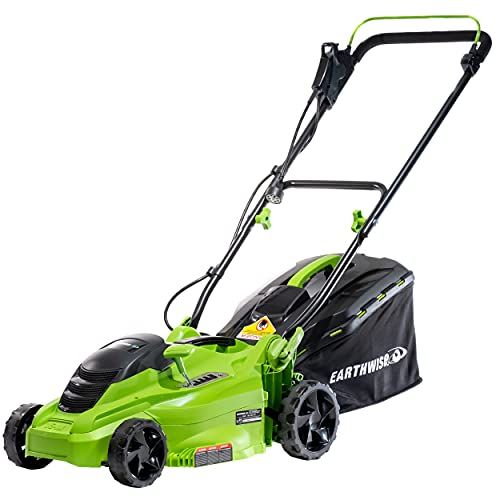 | 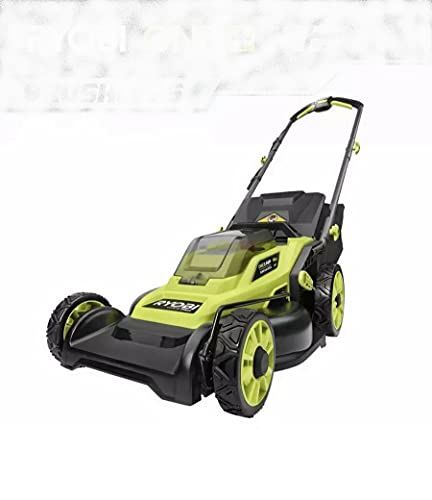 | 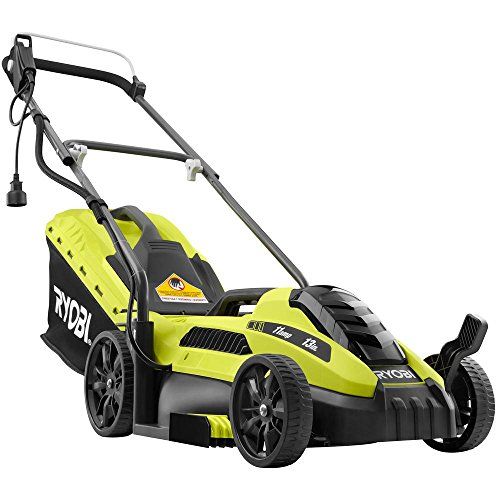 | 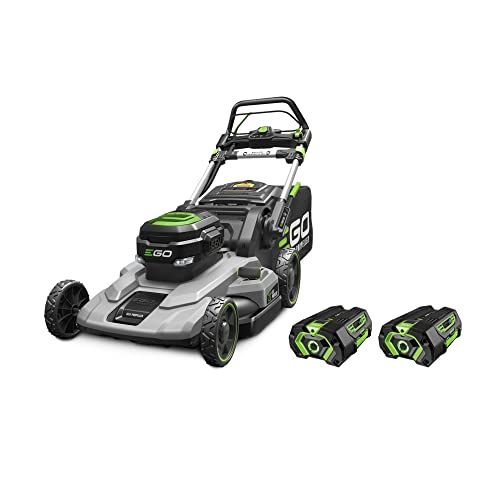 |  | |
|---|---|---|---|---|---|
| Model | 50616 | RYAC130 | LM2102SP-A | 967951168 | |
| Brand | Earthwise Power Tools by ALM | RYOBI | RYOBI | EGO Power+ | Husqvarna |
| Weight | 24.5 pounds | 36 pounds | 22 pounds | 62.6 pounds | 20.7 pounds |
| Color | Black | - | Black, Green | Black | Gray |
| Power source | AC | - | Electric | Battery Powered | Battery Powered |
| Item weight | 24.47 Pounds | 36 Pounds | 22 Pounds | 62.61 Pounds | 20.7 Pounds |
| Product dimensions | 55.98"D x 16"W x 43.03"H | - | - | 61.61"D x 22.92"W x 46.46"H | 23.22"D x 17.71"W x 27.62"H |
| Country of origin | - | - | - | China | - |
| Cutting width | 16 Inches | 16 Inches | 13 Inches | 21 Inches | 9 Inches |
| Number of positions | 5 | - | - | 6 | - |
| Material | Metal | - | Metal | Metal | Plastic |
| Operation mode | Automatic | - | Automatic | Automatic | Automatic |
FAQ
How do electric lawn mowers work?
Electric lawn mowers run on battery power instead of gas. They have rechargeable batteries that power an electric motor which spins the blades to cut the grass.
Are electric lawn mowers better for the environment?
Yes, electric lawn mowers are more environmentally friendly than gas-powered mowers. They produce zero emissions since they run on battery power. They are also quieter and more energy efficient.
How long do the batteries last on an electric lawn mower?
The battery life will vary depending on the mower model and battery type, but most standard electric mowers will provide 30 to 60 minutes of run time on a single charge. The higher-end mowers with larger batteries can last up to 90 minutes.
How long does it take to recharge the batteries?
The recharge time will depend on the charger and battery capacity, but it usually takes between 2 to 8 hours to fully recharge the batteries on an electric lawn mower.
Are electric lawn mowers suitable for large yards?
Electric mowers can work for large yards, but you have to carefully consider the battery life. For yards larger than 1/2 acre, you'll want a mower with a high-capacity battery (10 Ah or more) that can run for 60-90 minutes to complete the job on a single charge.
Do electric lawn mowers require maintenance?
Electric lawn mowers require little maintenance compared to gas mowers. You don't need to change the oil or spark plugs. However, you should still regularly sharpen the blades, clean the deck, and check/charge the batteries to keep the mower in good working condition.
Are electric lawn mowers expensive?
Electric lawn mowers are typically more expensive upfront compared to similar gas-powered mowers. However, electric mowers cost less to operate and maintain over their lifetime. The savings on fuel and maintenance can offset the higher upfront cost over a few years of use.
What safety precautions should I take with an electric lawn mower?
Always exercise caution when operating an electric lawn mower. Follow these tips:
Avoid mowing in wet grass. Water and electricity don't mix.
Wear proper protective gear like closed-toe shoes, long pants, glasses, and ear protection.
Keep the mower on level ground and watch your footing.
Keep an eye out for any exposed wiring or cables in the yard.
Don't overload the circuit when recharging the batteries.
Can I leave my electric lawn mower outside?
It is not recommended to leave your electric lawn mower outside exposed to the elements when not in use. Rain, snow, and extreme heat/cold can damage the rechargeable batteries and other components. Store your electric mower in a garage or shed when possible. If left outside, use a weather-resistant cover to help protect it.
Do I need a mulching blade for an electric lawn mower?
Mulching blades can be useful for electric mowers to help recycle grass clippings back into the lawn as you mow. However, mulching blades are not required and standard blades will still work fine for most mowing needs. Mulching blades can help provide nutrients back to the grass, but excess clippings should still be removed from the lawn to avoid clumping.
